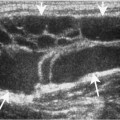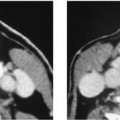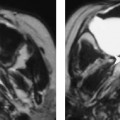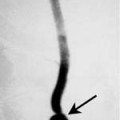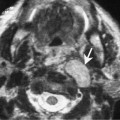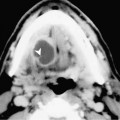Chapter 55 The majority of malignancies of the soft palate are squamous cell carcinoma (SCCA). The disease is most common in men between the ages of 60 and 70. The most common risk factors are tobacco and excessive alcohol use. Most cases of SCCA of the soft palate occur on the oropharyngeal side of the soft palate. The stages of SCCA have been classified by the American Joint Committee on Cancer (AJCC) (Table 55–1). The earliest symptom is usually a sore throat that can be exacerbated by eating or drinking. Advanced lesions that spread to adjacent areas may cause otalgia in addition to a sore throat. Very aggressive tumors will extend into the masticator space and cause trismus or temporal headaches. Extension into the nasopharynx may result in ipsilateral otitis media (Fig. 55–1). There is a high incidence of neck metastases at the time of initial presentation, with between 40 and 45% of patients presenting with palpable cervical metastases. The lymphatic drainage is complex. Three separate drainage pathways for the soft palate—anterior, middle, and posterior—are described. Of these three, the middle is the most constant pathway. The lymphatic vessels of the middle path drain into Group II nodes and have crossed lymphatic drainage. The lymphatics that constitute the posterior pathways are present in 60% of cases. These vessels drain posteriorly into the lateral retropharyngeal lymph nodes. Crossed drainage of the posterior pathways has been shown to be present in 50% of individuals. The anterior pathway is present in half of individuals and drains into the Group I lymph nodes and has crossed lymphatics in 50% of cases. The tumors are often reddish with ill-defined borders. They may be associated with a background of leukoplakia. The majority of SCCA of the soft palate are well-differentiated, unlike the other subsites of the oropharynx, which tend to be undifferentiated and anaplastic.
Squamous Cell Carcinoma of the Soft
Epidemiology
Clinical Findings
Pathology
Tis | Carcinoma in situ |
T1 | Tumor ≤ 2 cm in greatest diameter |
T2 |
